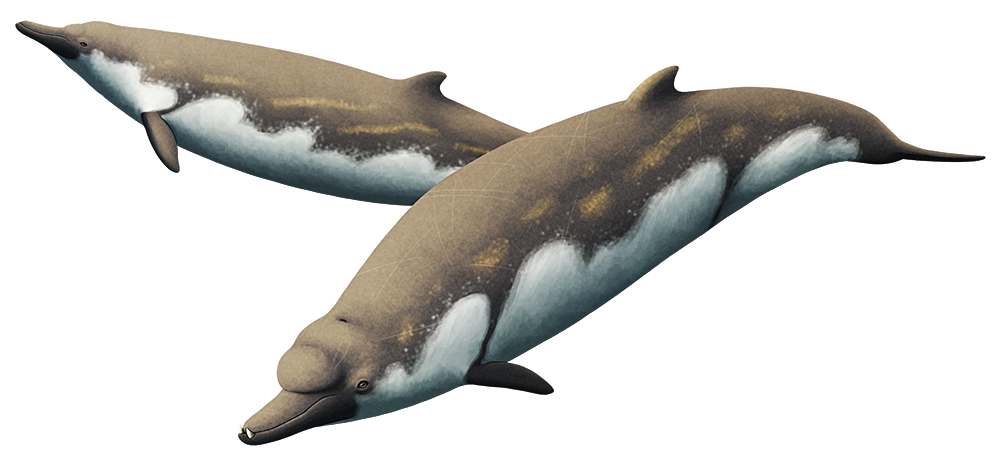Globicetus hiberus, a 5m long (16′4″) beaked whale from the Atlantic coast of Portugal and Spain. Its fossils can’t be easily dated since they were fished up from the seafloor, but it was probably around Early-to-Mid Miocene in age (~20-14 mya).
Its skull sported an odd bony sphere at the base of its snout, just in front of the melon, which appears to have been larger and more prominent in males than in females. Many modern beaked whales also have sexually dimorphic crests, ridges, and domes in their skulls, and these structures may function as sort of “internal antlers” – a display structure the whales can “see” via echolocation that signals their size, strength, and health to each other.

